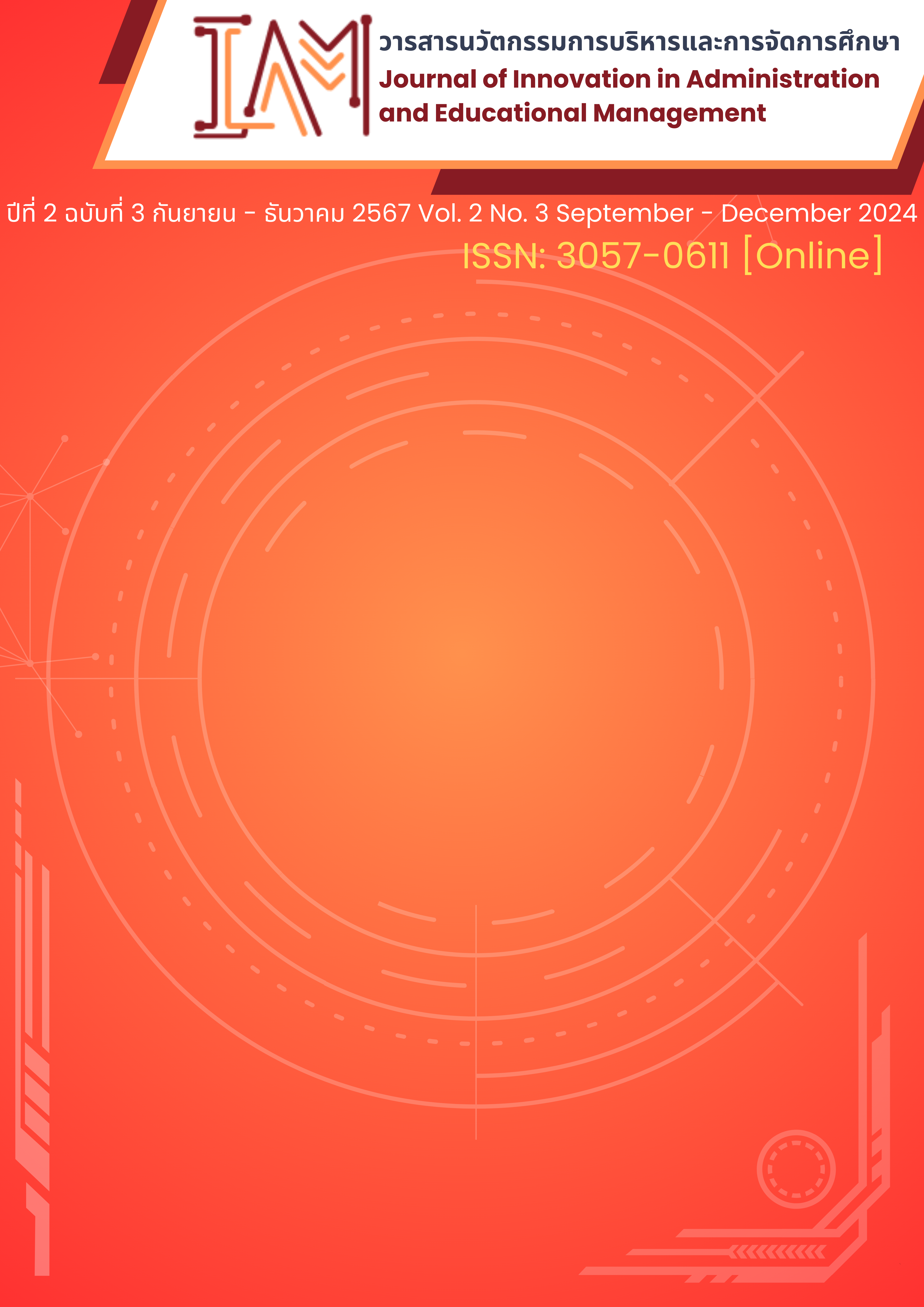Developing Policy Proposals to Reduce Inequality in Quality Education under Kalasin Primary Educational Service Area Office 2 Using User Experience Research
Keywords:
policy recommendations, educational inequality, User Experience ResearchAbstract
This research employed User Experience (UX) Research with the objectives 1) to examine the current and desired states of reducing educational inequality under the jurisdiction of the Kalasin Primary Educational Service Area Office 2, 2) to develop policy recommendations for addressing educational inequality, and 3) to evaluate the proposed policies. The study adopted a qualitative research framework, focusing on the Kalasin Primary Educational Service Area Office 2. The sample consisted of 14 participants, including educational administrators, school administrators, and educational personnel, selected through purposive sampling. The research instruments included a semi-structured interview and an evaluation form assessing propriety, feasibility, and utility. Data analysis involved calculating the mean and standard deviation. The findings revealed three key outcomes: 1) policy recommendations emerged from content analysis, encompassing budget allocation, personnel distribution, health and safety, and access to educational resources; 2) six components of the policy recommendations were formulated, including vision, mission, goals, objectives, strategies, and practices; and 3) the proposed policies were highly rated in terms of propriety, feasibility, and utility.
Downloads
References
กนกภรณ์ เทสินทโชติ. (2560). ปัจจัยที่ส่งผลต่อผลสัมฤทธิ์ทางการเรียนของนักเรียนระดับชั้นประถมศึกษาปีที่ 6 ในโรงเรียนขนาดเล็ก สังกัดสำนักงานเขตพื้นที่การศึกษาประถมศึกษาสระแก้ว เขต 1. (วิทยานิพนธ์ปริญญามหาบัณฑิต). ชลบุรี: มหาวิทยาลัยบูรพา.
กนกอร อุ่นสถานนท์. (2563). การบริหารด้านความปลอดภัยของสถานศึกษาสังกัดสำนักงานเขตพื้นที่การศึกษามัธยมศึกษา เขต 2 กรุงเทพมหานคร. วารสารวไลยอลงกรณ์ปริทัศน์, 10(2), 1 - 14
ชัยยุทธ ปัญญสวัสดิ์สุทธิ์. (2563). เหลื่อมล้ำในวัยเรียน: สองทศวรรษของความเหลื่อมล้ำทางคุณภาพการศึกษา และ การจัดสรรทรัพยากรระดับพื้นที่ของประเทศไทย. ใน ณพล สุดใส และพลอย ธรรมาภิรานนท์ (บ.ก.), ชีวิตที่เหลื่อมล้ำ: เหลื่อมล้ำตลอดชีวิต. (น.185 – 206). กรุงเทพมหานคร: มหาวิทยาลัยธรรมศาสตร์.
ณัชชา มหปุญญานนท์. (2566). ข้อเสนอแนะเชิงนโยบายการแก้ปัญหาความเหลื่อมล้ำทางการศึกษาในประเทศไทย. วารสารศึกษาศาสตร์ มหาวิทยาลัยมหาสารคาม, 17(1), 21 - 45.
ธนกร วรพิทักษานนท์. (2564). ผลกระทบของความเหลื่อมล้ำในการเข้าศึกษาต่อระดับอุดมศึกษาของนักเรียนไทย. วารสารวิจยวิชาการ, 5(6), 203 – 216.
ปังปอนด์ รักอำนายกิจ เเละ ศิริพงศ์ ปาลกะวงศ์ ณ อยุธยา. (2558). งบประมาณการศึกษากับผลสัมฤทธิ์ทางการเรียน: ข้อค้นพบในประเทศไทย. วารสารเศรษฐศาสตร์ปริทรรศน์ สถาบันบัณฑิตพัฒนบริหารศาสตร์, 9(2), 88 – 108.
พระมหาจักรพันธ์ จกฺกวโร (นะวะแก้ว). (2563). แนวทางการพัฒนาศักยภาพและโอกาสทางการศึกษาของเยาวชนบนพื้นที่สูงในจังหวัดตาก. วารสารปัญญาปณิธาน, 5(1), 119 - 131.
สำนักงานคณะกรรมการพัฒนาการเศรษฐกิจและสังคมแห่งชาติ. (2560). รายงานการติดตามความก้าวหน้าการสร้างความเป็น ธรรมและลดความเหลื่อมล้ำในสังคมไทย ภายใต้ยุทธศาสตร์การสร้างความเป็นธรรมและลดความเหลื่อมล้ำในสังคม แผนพัฒนาฯฉบับที่ 12. กรุงเทพมหานคร: สำนักงานคณะกรรมการพัฒนาการเศรษฐกิจและสังคมแห่งชาติ.
อุทัย ปริญญาสุทธินันท์. (2563). การพัฒนาชุมชนแนวคิดและทฤษฎีการพัฒนา ประเด็นปัจจุบันและกรณีศึกษา. กรุงเทพฯ: สำนักพิมพ์แห่งจุฬาลงกรณ์มหาวิทยาลัย.
Pholphirul, P., Rukumnuaykit, P., & Teimtad, S. (2023). Teacher shortages and educational outcomes in developing countries: Empirical evidence from PISA-Thailand. Cogent Education, 10(2), 1 – 26.
Downloads
Published
How to Cite
Issue
Section
License
Copyright (c) 2024 Journal of Innovation in Administration and Educational Management

This work is licensed under a Creative Commons Attribution-NonCommercial-NoDerivatives 4.0 International License.






